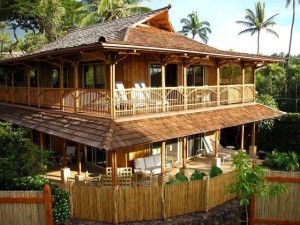 The bamboo industry will soon wake up to ‘engineered lumber’, adding a fresh dynamic to its prospect of increased usage in construction and homes. Although considered the fastest growing plantation timber and stronger than steel, bamboo’s use is restricted to low-rise houses and temporary structures. According to bamboo experts, who rave about its strength, the arrival of ‘bamboo lumber’ sets a new beginning for the furniture and construction industry so far obsessed with teak wood.
The bamboo industry will soon wake up to ‘engineered lumber’, adding a fresh dynamic to its prospect of increased usage in construction and homes. Although considered the fastest growing plantation timber and stronger than steel, bamboo’s use is restricted to low-rise houses and temporary structures. According to bamboo experts, who rave about its strength, the arrival of ‘bamboo lumber’ sets a new beginning for the furniture and construction industry so far obsessed with teak wood.
Bengaluru-based Indian Plywood Industries Research and Training Institute (IPIRTI), an autonomous body under the Ministry of Environment, Forest and Climate Change, has discovered the concept of ‘bamboo lumber’ and, based on its research and technology findings, has followed it up with trial productions at its Tumkur Road unit.
“IPIRTI-Bengaluru has developed engineered bamboo lumber for the first time in India, and the technology is ready with us to help any bamboo-based industry set up commercial production. The technical feasibility report is also available for entrepreneurs, and scientists at the Institute can produce bamboo lumber in a pilot plant to address the challenges faced by industry,” said B.N.Mohanty, Director, IPIRTI, Bengaluru.
Composite lumber made from bamboo retains bamboo’s mechanical properties and can be manufactured in well-defined dimensions, similar to commercially available wood products. “As of now, only teakwood lumber is popular for its quality and durability and the larger sized planks that are possible due to the huge tree girth. It costs Rs.3,600 per cft. But IPIRTI’s engineered bamboo lumber takes away the size disadvantage and work out to Rs. 2,700 per cft.,” said Mohanty.
The initial hiccups to get the right kind of machinery and selecting the right bamboo species suitable for making bamboo lumber took a few months of work at IPIRTI. Bamboo is bio-degradable and the elastic vascular bundles in its stalk lend it tensile strength. Engineered lumber is specially treated for its longevity, say the scientists at Centre for Bamboo Development (CBD), a division of IPIRTI working on bamboo-based engineered products.
“Research contributions for bamboo lumber have come from all divisions of IPIRTI such as the choice of adhesives used, service life enhancement, testing and standardisation,” said K. Thanigai, Scientist, Head-Extension, IPIRTI.
“Bamboo culms are crushed into smaller strands and then glued and pressed under high temperature. The approach helps overcome the presence of inherent hollow core, even as the inter-nodes are rectified,” said Thanigai. From the research results on bamboo strand lumber, Thanigai finds that it is economically, environmentally and structurally beneficial to use bamboo in comparison to other wood.
According to IPIRTI, the total industry demand for wood will go up from 58 million cubic metres in 2000 to 153 million cubic metres in 2020, a rise of about 164 per cent in 20 years, which includes all wood-based industries as pulp wood , sawn wood, panel wood and solid wood. All products such as plywood, particle board, fibre board, flush doors, panel doors, and block boards can be done with bamboo, and give more strength and longevity.
According to the Forest Survey of India (FSI), India grows bamboo in 8.96 million hectares of forest area, which is about 12.8 per cent of the total forest cover.
Source: The Hindu
Image Courtesy: AzureViral
